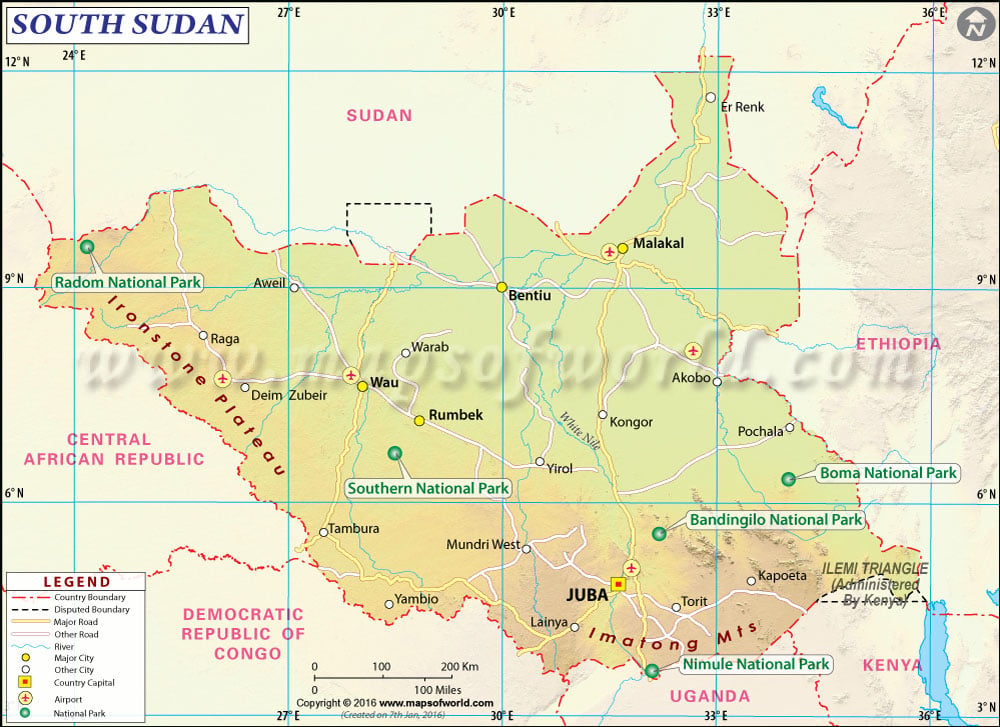South Sudan Map

- Neighboring Countries - Uganda, Central African Republic, Kenya, Ethiopia, Sudan
- Continent And Regions - Africa Map
- Other South Sudan Maps - Where is South Sudan, South Sudan Blank Map, South Sudan Rail Map, South Sudan River Map, South Sudan Cities Map, South Sudan Political Map, South Sudan Flag
 Wall Maps
Wall Maps